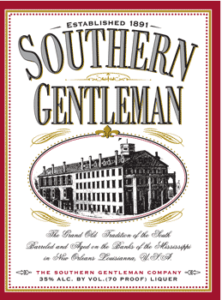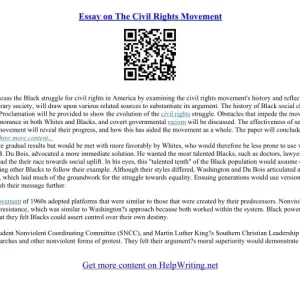
The Evolution of the Southern Gentleman: A Look Back & Ahead
The image of the Southern gentleman is deeply ingrained in the American consciousness – a figure of chivalry, grace, and often, contradiction. From the antebellum planter to the modern-day professional, the archetype has undergone a profound evolution, shaped by societal shifts, economic changes, and a relentless re-evaluation of its core tenets. Understanding this evolution offers a fascinating glimpse into the complexities of Southern identity and its ongoing negotiation with the broader American narrative.
The Antebellum Ideal: A Myth Unveiled
The romanticized vision of the antebellum Southern gentleman often overshadows the brutal reality. He was, in many cases, a wealthy landowner, his wealth built on the backs of enslaved people. Chivalry, in this context, was often a performance, a facade masking the inherent cruelty of the plantation system. Honor, while fiercely upheld within his social circle, did not extend to those considered beneath him. This period established a foundation for the archetype, but one riddled with inherent hypocrisy and moral compromises. The “gentlemanly” pursuits – hunting, equestrianism, and refined social graces – served to reinforce a hierarchical society that privileged the few at the expense of the many.
Reconstruction and the Shifting Sands:
Reconstruction brought about upheaval. The loss of the Confederacy and the abolition of slavery shattered the old order, leaving the Southern gentleman grappling with a new reality. Many clung to the vestiges of the past, resisting change and clinging to outdated ideals. Others, however, adapted, albeit often reluctantly. The rise of the New South saw attempts to redefine the gentleman, emphasizing industry and economic progress while simultaneously struggling to reconcile the past with a rapidly changing present. This era represents a crucial turning point – the beginning of a long and often turbulent process of reevaluation and reformation.
The 20th Century and Beyond: Redefining the Gentleman
The 20th century witnessed a significant erosion of the traditional Southern gentleman’s power and influence. The rise of industrialization, urbanization, and the Civil Rights Movement forced a reckoning with the deeply ingrained racial inequalities that had defined the archetype. The “gentleman” could no longer comfortably maintain his position of dominance. While some resisted this change, others sought to redefine the concept, emphasizing qualities like integrity, respect, and empathy – values that challenged the patriarchal and often racist underpinnings of the traditional model.
| Era | Defining Characteristics | Challenges Faced |
|---|---|---|
| Antebellum | Landownership, slavery, perceived chivalry, honor | Moral hypocrisy, reliance on forced labor |
| Reconstruction | Adapting to abolition, economic upheaval | Loss of social standing, resistance to change |
| 20th Century | Redefining ideals, grappling with racial inequality | Civil Rights Movement, changing social dynamics |
| Present Day | Inclusivity, empathy, social responsibility, integrity | Maintaining tradition while embracing modern values |
The Modern Southern Gentleman: A Work in Progress
Today, the concept of the Southern gentleman continues to evolve. The ideal is no longer defined solely by wealth or lineage, but increasingly by character and conduct. The modern iteration embraces inclusivity, challenges ingrained biases, and actively participates in building a more just and equitable society. This involves a conscious rejection of the harmful aspects of the past, while striving to preserve the positive elements – a refined manner, respect for others, and a commitment to community.
This evolution is not without its challenges. The legacy of the past casts a long shadow, and the struggle to reconcile tradition with progress remains an ongoing process. The modern Southern gentleman is a work in progress, constantly negotiating the complexities of his heritage and striving to create a more authentic and inclusive identity. This journey requires self-reflection, a willingness to confront uncomfortable truths, and a dedication to creating a better future. The narrative is far from complete, but the ongoing evolution offers a powerful testament to the adaptability and transformative potential of a deeply rooted cultural archetype.

Additional Information
The Evolution of the Southern Gentleman: A Deeper Dive into Shifting Ideals
The concept of the “Southern Gentleman” is a complex and evolving one, deeply intertwined with the historical realities of the American South. While romanticized narratives often portray a chivalrous, refined figure, a deeper analysis reveals a multifaceted identity shaped by power dynamics, social structures, and shifting cultural norms. A comprehensive examination necessitates moving beyond superficial portrayals and engaging with the historical contradictions inherent in this archetype.
I. The Historical Roots: A Legacy of Contradiction
The idealized “Southern Gentleman” emerged from the antebellum South, inextricably linked to the institution of slavery. The plantation system, with its hierarchical structure, fostered a specific image of masculinity centered around land ownership, political power, and a perceived inherent superiority. This image was meticulously cultivated through education, social etiquette, and a carefully constructed code of conduct. However, this code often masked a brutal reality: the exploitation and subjugation of enslaved people formed the very foundation of the Southern gentleman’s privileged existence.
Examples abound of prominent Southern figures who embodied this paradoxical duality: men lauded for their eloquence and charm, yet complicit in, or even actively perpetuating, the violence and injustice of slavery. This inherent contradiction underscores the need to critically examine the legacy of the “Southern Gentleman” and confront its uncomfortable truths. Statistical data on slave ownership amongst the Southern elite further reinforces the inextricable link between this idealized image and the brutal reality of the plantation system.
II. The Post-Civil War Transformation: Adaptation and Resistance
The Civil War and Reconstruction period profoundly altered the social landscape of the South, challenging the very foundations of the traditional Southern gentleman. The loss of the Confederacy shattered the established social order, yet the ideal persisted, albeit in modified forms. The “Lost Cause” mythology, for example, attempted to reframe the Confederacy’s defeat and romanticize the antebellum South, preserving a version of the Southern gentleman’s legacy that sanitized its connection to slavery.
This period witnessed a complex interplay of adaptation and resistance. Some former Confederates attempted to reclaim their lost status through political maneuvering and economic strategies, while others embraced new opportunities within a changing South. The rise of the New South movement saw efforts to modernize the economy and embrace industrialization, yet the lingering influence of the old order shaped the trajectory of social and political developments. Case studies of individual families and communities during this era illustrate the diverse responses to the upheaval and the evolving definition of “gentlemanliness.”
III. The 20th and 21st Centuries: Redefining Masculinity
The 20th and 21st centuries have witnessed a continued evolution of the Southern gentleman archetype. The rise of the Civil Rights Movement significantly challenged the racial hierarchy underpinning the traditional image. The struggle for racial equality exposed the hypocrisy of a system that preached chivalry yet perpetuated systemic discrimination.
Contemporary portrayals often grapple with this legacy. Some narratives strive to redefine the Southern gentleman in a more inclusive and progressive light, emphasizing qualities such as integrity, compassion, and respect for others. However, nostalgic depictions that perpetuate harmful stereotypes still persist, highlighting the ongoing debate surrounding the meaning and relevance of this historical archetype in the modern world. Analyzing contemporary media representations – from literature to film – can provide insights into how these evolving interpretations are shaping public perception.
IV. Looking Ahead: A Legacy in Flux
The future of the “Southern Gentleman” remains uncertain. While the idealized image may continue to hold nostalgic appeal for some, its historical baggage necessitates a critical reassessment. The ongoing dialogue surrounding race, gender, and social justice demands a re-evaluation of traditional masculinity and a rejection of the harmful aspects of the past.
Future research might focus on:
- Intersectional analysis: Exploring how the concept of the Southern gentleman intersects with other identities, such as race, class, and gender, to create nuanced understandings of its impact.
- Comparative studies: Comparing the evolution of masculinity in the South with other regions of the United States and the world.
- Qualitative studies: Utilizing oral histories and ethnographic research to capture the lived experiences of individuals who identify with or challenge the traditional archetype.
Ultimately, understanding the evolution of the Southern gentleman requires a commitment to honest historical reflection and a willingness to confront the complex legacy of this multifaceted and often contradictory figure. Only through critical examination can we gain a deeper understanding of its impact on the South and its relevance in the 21st century.






